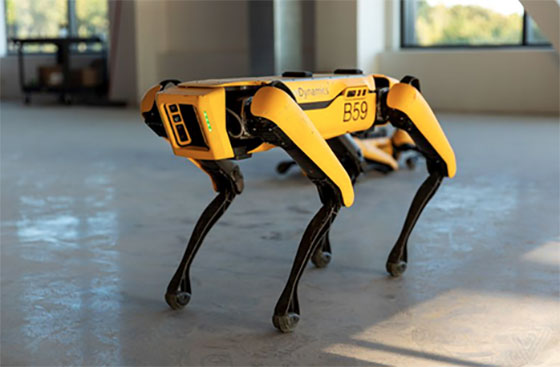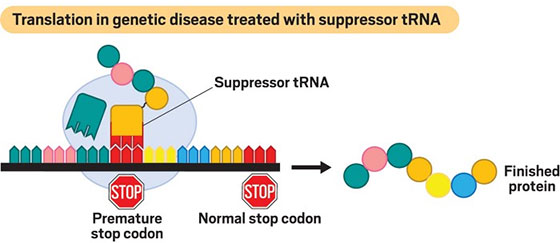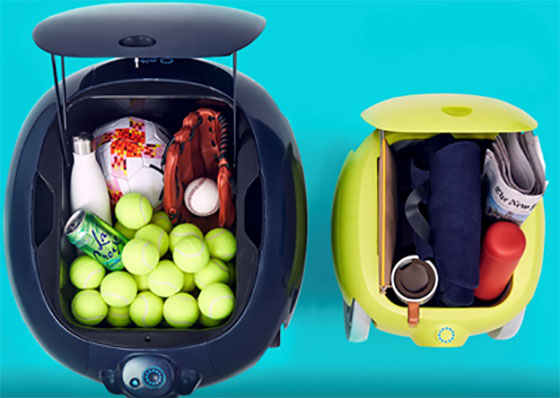Dear Reader,
Thank you to everyone who took the time to tune in for my confidential briefing last night.
Apple’s new launch is unlocking an incredible $12 trillion profit opportunity right now, and we will be poised to capitalize on it here at Brownstone Research.
For readers who are interested in what Apple’s up to but weren’t able to join us last night, you can find a replay of our briefing right here.
We’ll keep it up for a short time, but please don’t delay. Some time-sensitive investments require action right now.
Boston Dynamics is really on a roll with more exciting news. I’ve been impressed with all the company’s progress since its acquisition by South Korean conglomerate Hyundai.
When we checked in on Boston Dynamics last month, it had just unveiled an upgrade to the artificial intelligence (AI) powering its bipedal robot Atlas. The upgrade gave the robot incredible agility and the ability to navigate in a dynamic environment. We even showed a video of Atlas doing backflips.
Well, Boston Dynamics’ dog-like robot Spot just got a similar upgrade. And it’s a big one…
We first talked about Spot two years ago. To bring newer readers up to speed, Spot is a yellow robot that looks a lot like a dog. It moves on four legs and has a wide range of functionality. It can go upstairs and downstairs. It can carry objects around. And Spot even has a robotic “arm” that enables it to open doors.
Here it is:
Spot, the Robot “Dog”

Source: Boston Dynamics
Spot’s incredible functionality opens the door to all kinds of enterprise applications. Spot can carry out specific tasks. It can be used to monitor a location for security purposes. And Spot could be deployed into an area that’s dangerous to scout it out and send back videos of what is going on.
This could be a burning building, an area with environmental hazards, or even a sensitive crime scene. Spot could go in first and provide visual and audio data. This would help humans determine the best approach to solve the problem.
And with Boston Dynamics’ recent release of AI software version 3.0 for Spot, the robot can now function much better in a dynamic environment. It can analyze its surroundings and determine how best to navigate around objects. This allows Spot to abandon its original path and reroute to get from Point A to Point B if something changes around it.
What’s more, this upgrade allows humans to remotely control Spot when necessary.
If it runs into a situation that it can’t figure out, a human operator can basically “teleport” into the robot and see the world through its front-facing camera. The operator can then control the legs and the robotic arm to get Spot out of any jam.
So this is a major software upgrade that makes Spot even more useful.
What we are witnessing here is an incredible confluence of robotics, AI, and battery technology that will make robots an essential part of everyday human life.
In fact, robots like Spot will be a great complement to humans in many different fields. They are perfectly suited for the dangerous or repetitive tasks that we humans don’t do well with over time.
What’s more, the tech has advanced enough now that the price is dropping to levels where even smaller businesses can afford to adopt it. That makes this a major inflection point in the robotics industry.
In fact, we’re entering an age of automation, where advanced robotics and autonomous technology will take over many of the difficult or undesirable tasks currently handled by humans…
And that will present many investment opportunities over the next few years. If you’d like to learn more about how to invest, then go right here for more details.
RNA technology has quickly risen to the forefront of the biotech industry over the last 18 months.
It started with a focus on messenger RNA (mRNA) technology, which BioNTech (BNTX), Pfizer (PFE), and Moderna (MRNA) used to develop their COVID-19 vaccines. And just last week, we talked about a brand-new class of medicines based on endless RNA (eRNA) technology.
And now we are starting to see venture capital (VC) flow into development around another new RNA technology called transfer RNA (tRNA).
In fact, three companies – ReCode Therapeutics, ShapeTX, and Tevard Biosciences – have collectively raised nearly $250 million in venture capital since March of last year. That means it would be smart for us to pay attention to developments in this therapeutic approach.
As a reminder, mRNA tells cells which protein they need to make and how much of the protein is needed. But this process isn’t 100% foolproof.
Roughly 10% of genetic diseases are caused by a “flaw” in the mRNA strand called a premature stop codon. And this codon does exactly what its name implies – it tells cells to stop making the protein too soon. That causes the body to produce an unfinished protein, which results in disease.
Here’s a visual:

Source: C&EN
And this is where tRNA therapeutics come in. tRNA can suppress these premature stop codons, preventing them from stopping the production of protein. This fixes the flaw in mRNA and instructs the cells to continue producing the proper protein at normal levels.
Here’s a visual:

Source: C&EN
As we can see, using tRNA to suppress the premature stop codons is really an elegant solution.
The alternative would be to “cut out” the premature stop codon using genetic editing technology like CRISPR, but that’s a more complex process. Using tRNA to suppress unwanted RNA mutations may very well be a better approach.
And this isn’t the only application for tRNA therapeutics. The approach can also be used to increase protein production to cure diseases caused by insufficient proteins in the body.
So tRNA is another new class of medicines that we need to pay close attention to going forward.
Let’s add the three pioneers in this area – ReCode Therapeutics, ShapeTX, and Tevard Biosciences – to our early stage watchlist.
And there is one other company that I’m very excited about in this space that has the rights to a key piece of intellectual property. The company is currently in my Exponential Tech Investor model portfolio, so I can’t mention its name.
Needless to say, if this therapeutic approach is proven and makes progress through clinical trials, the company will be worth an absolute fortune.
We’ll wrap up today with a fun and interesting robotics story that has a strong social dynamic to it.
There’s a small robotics company outside of Boston called Piaggio Fast Forward that’s doing some interesting work. The company has produced what are basically small cargo robots capable of following their owner around.
Here’s a look at Piaggio’s first two product offerings:
Gita and Gitamini

Source: Piaggio Fast Forward
The robot on the left is the Gita. It can carry about 44 pounds of gear. And the robot on the right is the Gitamini. It can carry 28 pounds.
What makes these robots so interesting is that they have sensors and computer vision (CV) cameras on the front that enable them to navigate their surroundings while following their owner around.
The idea is that we can load up our Gita with whatever items we would normally carry in a backpack or a cooler and have it follow us to where we need to go.
Here’s the Gita in action:
Gitamini in Action

Source: The Verge
How neat is this?
These robots are fueled by a lithium-ion battery and have very functional longevity.
The Gita can handle four hours, or about 12 miles, of continuous travel on a single charge. And it takes about two hours to recharge the battery completely.
As for the Gitamini, it can operate for about six hours or 21 miles on a single charge. And it also takes about two hours to fully recharge.
And that brings us to the price… The Gita costs $2,950 and the Gitamini costs $1,850.
These are great price points that make these robots accessible to a pretty wide range of target consumers. And that got me thinking – could a product like this become a new status symbol?
Imagine what would happen the first time somebody walked around their neighborhood with one of these little robots tracking behind. No doubt they would be the talk of the town. And in the spirit of “keeping up with the Joneses,” it’s easy to envision neighbors rushing to buy their own little Gitas.
We can also see how these robots would be very useful in certain settings. For example, they could certainly lighten the load when visiting an amusement park. Forget the backpack – just load up the Gita with provisions for the day and let it do all the work.
And it’s easy to imagine how helpful a robotic assistant like this would be for someone on crutches or in a wheelchair. This product would be invaluable to those who need assistance.
So we will keep an eye on Piaggio Fast Forward. I’m very curious to see if these little robots catch on.
And bigger picture – this is a great example of how robotic following technology can be functional and useful in our daily lives. It will be fun watching to see how quickly this technology is adopted… or not.
Regards,
Jeff Brown
Editor, The Bleeding Edge
Like what you’re reading? Send your thoughts to feedback@brownstoneresearch.com.
The Bleeding Edge is the only free newsletter that delivers daily insights and information from the high-tech world as well as topics and trends relevant to investments.
The Bleeding Edge is the only free newsletter that delivers daily insights and information from the high-tech world as well as topics and trends relevant to investments.